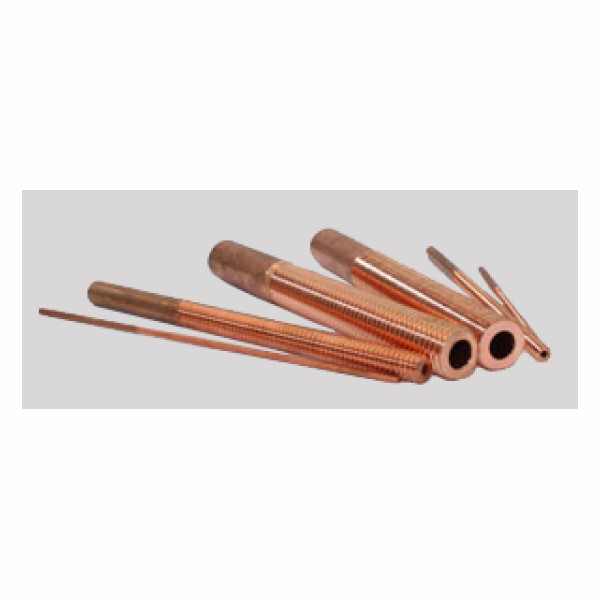Copper electrodes for threading
Copper electrodes for threading

Cu electrode for thread M 16 L=120mm HGH
SKU: 7390
Select a modelIn Stock
• If you order today, the product will be delivered within 1 day.
• For orders over BGN 200 shipping is free.
Copper electrodes for threading are specialized tools designed for high-precision electrical discharge machining (EDM), especially when creating internal threads in various metal parts. These electrodes are characterized by high electrical conductivity and excellent thermal resistance, which makes them indispensable in precision metalworking.
Characteristics of copper electrodes for threading
•Material: Made of high-quality copper, which provides excellent electrical conductivity and minimal wear during processing.
•Design: A tubular structure allowing for efficient removal of eroded material and coolant during the process.
•Dimensions: Available in a variety of diameters and lengths corresponding to standard metric threads (e.g. M2, M4, M6, etc.), allowing flexibility in various applications.
Applications
Copper threading electrodes are widely used in industries where high accuracy and quality of internal threads are required:
•Mechanical engineering: Manufacturing of precision machine components with internal threads.
•Aviation industry: Production of parts with high demands on accuracy and reliability.
•Medical equipment: Creation of instruments and implants with fine threaded connections.
Advantages of using copper electrodes for threading
•High precision: Allows the creation of threads with minimal tolerances and a smooth surface.
•Efficiency: Thanks to the excellent electrical conductivity of copper, the erosion process is faster and with less wear on the electrode.
•Flexibility: The variety of sizes and shapes allows the processing of different types of threads in a variety of materials.
Maintenance and storage
To ensure long-lasting and efficient operation of copper threading electrodes, it is important to follow the following recommendations:
•Storage: Keep the electrodes in a dry and clean environment to prevent oxidation and contamination.
•Cleaning: After use, clean the electrodes of residue to ensure optimal conductivity for the next use.
•Inspection: Regularly check the electrodes for signs of wear or damage and replace them if necessary.
